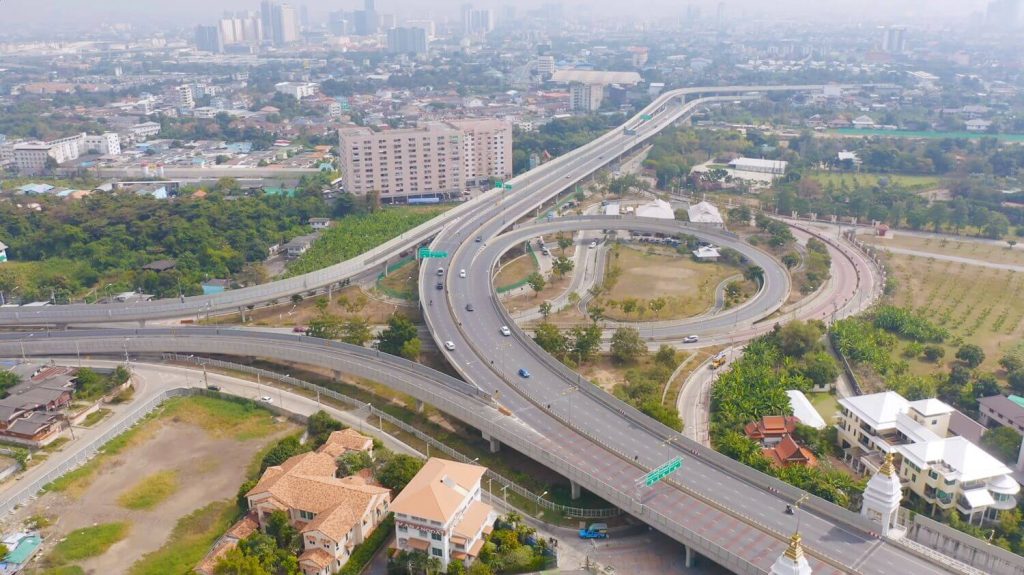
Malaysia is currently undergoing a transformation driven by large-scale infrastructure and construction projects. From new expressways to cutting-edge rail networks and urban developments, these investments are key to improving connectivity, boosting economic growth, and positioning the nation for future success.
Below is your comprehensive guide to the top 10 mega infrastructure projects in Malaysia—essential knowledge for anyone involved in infrastructure projects or construction projects today.
The West Coast Expressway (E32) is a 233 km tolled route stretching from Banting (Selangor) to Changkat Jering (Perak). Currently under construction in phases, several sections are already in use.
With a total budget of ~US $1.56 billion and planned concession extendible up to 50 years, the WCE is crucial for improving traffic flows and opening up secondary towns to economic activity .
The ECRL is a 665 km double-track rail network linking Port Klang to Kota Bharu, facilitating both electrified passenger and freight travel.
Currently ~85% complete as of July 2025, it’s slated to significantly improve East–West connectivity and trade corridors by its official opening in early 2027.
Segment 2 of Penang’s Light Rail Transit (Georgetown to Penang Sentral) aims to alleviate congestion and improve public transit.
It integrates seamlessly with existing bus and ferry systems, supporting the island’s push toward greener, urban mobility.
The Pan-Borneo Highway is a 2,083 km network upgrading East Malaysian federal roads into dual carriageways. It links physically and economically remote regions, strengthening supply chains, tourism, and inter-state connectivity.
An ambitious maritime and urban development offshore Malacca, the Melaka Gateway plans industrial zones, cruise terminals, and leisure estates. After initial delays, revival efforts are reestablishing this mega-development.
The EKVE, spanning 39.5 km, provides a high-capacity route between Ukay Perdana (Ampang) and Sungai Long (Kajang). Despite legal hurdles and flooding concerns, it’s 89% complete with full opening expected by late 2025.
Although the high-speed rail project is suspended, Bandar Malaysia continues as a strategic intermodal township near KL Sentral. It integrates rail, transit systems, and urban living—all meant to serve Malaysia’s future as a regional transport hub.
Set in Iskandar Puteri, Johor, Medini is a 2,230-acre smart-city township. With an estimated GDV of US $20 billion and targeting 450,000 residents by 2030, it emphasizes mixed-use development, urban planning, and foreign partnership.
Covering central Sarawak, SCORE is one of five national development corridors. Since its launch in 2008, it has attracted major energy and industrial investments, including Samalaju Industrial Park (~MYR 29 billion FDI), catalysing development in East Malaysia.
Given its scale and impact, the ECRL deserves emphasis for its pivotal role in regional trade, passenger travel, and strategic planning, making it far more than a typical rail project.
Mega infrastructure projects serve as catalysts for economic growth by stimulating activity across multiple sectors, from construction and logistics to manufacturing and services. During the construction phase, they create thousands of job opportunities and inject capital into local economies.
Post-construction, they improve accessibility, reduce logistics costs, and enable more efficient trade and mobility—helping to boost Malaysia’s overall GDP and regional development.
Large-scale projects increase Malaysia’s attractiveness to foreign investors by demonstrating long-term commitment to national development and regional connectivity. Well-planned infrastructure, such as expressways, ports, and industrial corridors, reduces risk and enhances the ease of doing business.
These projects also open doors for public–private partnerships (PPPs), which bring in capital, innovation, and expertise from both local and international players.
Modern infrastructure projects are increasingly designed with sustainability in mind. Rail-based transport networks like the ECRL reduce reliance on road freight and help lower carbon emissions. Integrated townships and smart cities include green spaces, renewable energy systems, and efficient public transport.
These efforts contribute to long-term environmental goals, such as reducing air pollution, conserving resources, and enhancing climate resilience.
As Malaysia accelerates digitalisation and positions itself as a regional hub for data centres, AI-driven industries, and high-tech manufacturing, robust infrastructure is essential. Reliable transportation networks, efficient utilities, and well-planned urban developments lay the foundation for future economic shifts.
These mega projects help future-proof the country by enabling seamless mobility, supply chain integration, and digital connectivity across strategic growth corridors.
Geosynthetics suppliers in Malaysia play a crucial behind-the-scenes role in these mega infrastructure projects by providing essential materials for soil reinforcement, erosion control, drainage, and containment.
Their expertise helps ensure long-term structural integrity, sustainability, and cost-efficiency across expressways, rail lines, land reclamation zones, and industrial parks.
As demand for durable, engineered solutions grows, geosynthetics have become an indispensable part of modern construction strategies.
GSSB is one of Malaysia’s trusted geosynthetics suppliers, supporting key infrastructure developments with reliable, high-performance solutions.
Malaysia’s top 10 mega infrastructure and construction projects reflect a bold drive toward modernization, connectivity, and sustainable development. From the West Coast Expressway to the East Coast Rail Link, each development reshapes the nation’s landscape.
For businesses and professionals in infrastructure and construction supply chains, staying informed and proactive is key to aligning strategy and seizing emerging opportunities.
Planning your next infrastructure project? Choose GSSB Malaysia — an ISO-certified, G7-accredited geosynthetic supplier — and a leading name in Geosynthetics Malaysia — for trusted quality, proven expertise, and reliable solutions you can build on.
Copyright © Gateway Structure Sdn Bhd (199401025111). All Right Reserved.